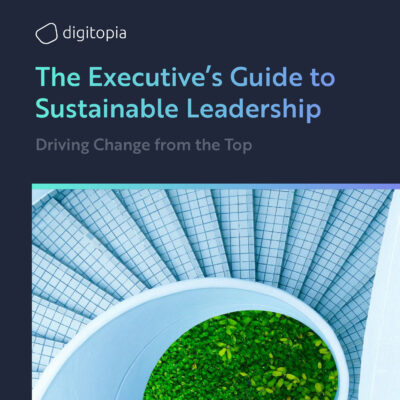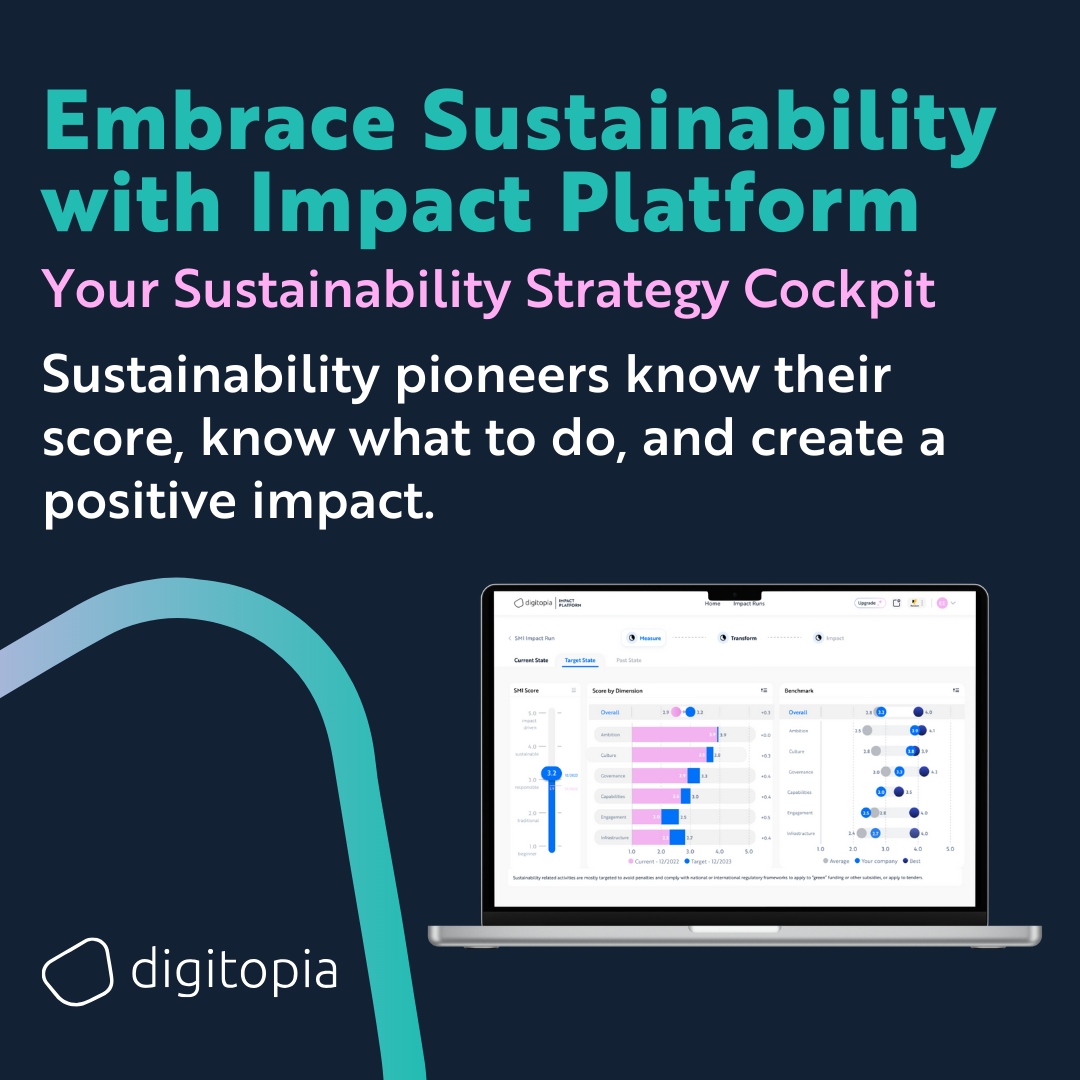
In today’s business landscape, sustainability is more than just a buzzword; it has become a crucial element for long-term success and resilience. Executives play a pivotal role in embedding sustainability into their organizations. Their influence and decision-making power can set the tone for corporate sustainability initiatives, ensuring these efforts are prioritized and integrated into the core business strategy. This blog post summarizes the key insights from our latest ebook, “The Executive’s Guide to Sustainable Leadership: Driving Change from the Top,” highlighting how executives can lead the charge in sustainability.
Sustainable leadership involves executives taking proactive steps to integrate environmental, social, and governance (ESG) aspects into their business strategies. By doing so, they can drive comprehensive improvements across the organization, creating long-term value, enhancing reputation, and gaining a competitive advantage. This approach not only meets stakeholder expectations but also positions the company for success in a rapidly changing market.
Key Insights from the Ebook:
The Role of Executives in Sustainability: Executives, including CEOs, board members, and senior leaders, have the authority to shape the strategic direction of their organizations. Their commitment to sustainability can inspire employees and stakeholders to embrace sustainable practices. By incorporating sustainability into the company’s vision and strategic goals, committing resources, and fostering a culture that values sustainability, executives can drive transformative change.
Setting the Vision: Creating a Sustainable Strategy: A clear and compelling sustainability vision serves as the foundation for all sustainability initiatives within an organization. This vision should be ambitious yet specific, aligning with the company’s core values and involving input from diverse stakeholders. Measurable goals are essential for tracking progress and demonstrating accountability. Executives must integrate this vision into the overall business strategy, allocate necessary resources, and ensure continuous performance management.
Building a Sustainable Culture: Creating a culture of sustainability requires deliberate effort and strategic initiatives. Leadership commitment, employee engagement, education, recognition, and integration into daily operations are key strategies for fostering this culture. By leading by example and empowering middle management, executives can ensure that sustainability becomes an integral part of the organization’s identity.
Engaging Stakeholders and Building Partnerships: Successful sustainability initiatives involve engaging a wide range of stakeholders, including employees, customers, investors, suppliers, communities, and regulatory bodies. Strategies for effective stakeholder engagement include clear communication, inclusive decision-making, collaborative projects, and feedback mechanisms. Partnerships can amplify sustainability efforts, driving innovation and creating synergies.
Leading by Example: Executive Actions and Behaviors: Executives must model sustainable behaviors through their actions and decisions. Personal commitment, visible support for sustainability initiatives, transparency, and integrating sustainability into business decisions are crucial. Transparency and accountability are key to building trust and driving sustainable change within the organization.
Measuring Success: Sustainability Metrics and Reporting: Effective sustainability metrics are essential for driving accountability and transparency. By measuring and tracking performance, companies can identify areas for improvement, set ambitious targets, and demonstrate their commitment to sustainability. Transparent reporting enhances trust with stakeholders and fosters a culture of continuous improvement.
Case Study: Levi Strauss & Co. – Leadership Commitment to Sustainability
Levi Strauss & Co., the iconic American apparel company, has established itself as a leader in sustainability through the visionary leadership of its executives. The company’s commitment to sustainability is deeply ingrained in its operations, product development, and corporate ethos. Levi Strauss & Co. set a bold vision for sustainability with the introduction of its “Water<Less” campaign, which aims to reduce water usage in the manufacturing process. The company also committed to using 100% sustainable cotton by 2025 and achieving net-zero greenhouse gas emissions by 2050. These ambitious goals provide a clear and motivating target for the entire organization. The company’s innovative practices and transparent reporting have built trust with stakeholders and driven continuous improvements in sustainability performance.
Call to Action for Sustainable Leadership
The journey toward sustainable leadership is both challenging and rewarding. As business leaders, you have the unique opportunity to drive meaningful change within your organizations and beyond. Here are some practical steps to get started:
- Set Ambitious Goals: Establish clear, measurable, and ambitious sustainability goals that align with your business strategy.
- Integrate Sustainability into Core Operations: Embed sustainability into all aspects of your operations, from product design and supply chain management to marketing and employee engagement.
- Foster a Culture of Innovation: Encourage a culture of innovation that values sustainability and provides training and resources to empower employees.
- Collaborate and Partner: Build partnerships with other businesses, NGOs, and government entities to amplify your sustainability efforts.
- Measure and Report Progress: Implement robust sustainability metrics and regularly communicate your progress to stakeholders.
Explore Digitopia’s Sustainability Maturity Index (SMI) for a comprehensive assessment of your sustainability performance, helping you identify strengths, areas for improvement, and opportunities for innovation.
Elevate Your Sustainability Strategy with the Sustainability Maturity Index
Explore Digitopia’s Sustainability Maturity Index (SMI) for a comprehensive assessment of your sustainability performance, helping you identify strengths, areas for improvement, and opportunities for innovation.
Download the Full Ebook: To dive deeper into how your business can lead the charge in sustainability innovation, download our full ebook, “The Executive’s Guide to Sustainable Leadership: Driving Change from the Top.” Discover detailed strategies, inspiring case studies, and actionable insights to transform your sustainability initiatives and drive long-term success.
By taking these steps, you can position your organization as a leader in sustainability, driving positive change and achieving long-term success. Embrace sustainable leadership today and join the ranks of forward-thinking businesses that are shaping a more sustainable and prosperous future for all.




